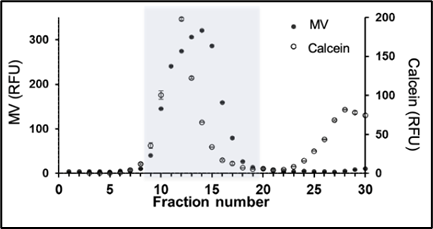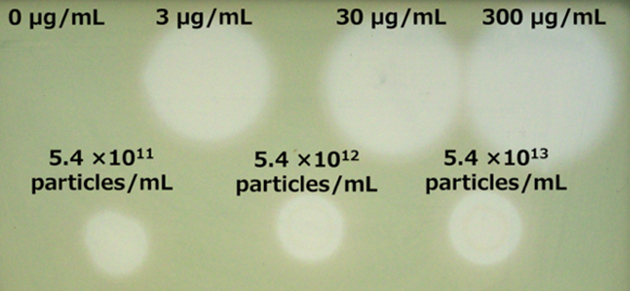Advantage and Core Benefit
- Access to bacteria via membrane vesicles may allow development of products that act on specific bacteria
- Increased potential for delivery to bacteria even in the presence of barriers such as biofilms
- Enables mass production of membrane vesicles by explosive cell lysis
Background and Technology
It is known that bacteria release membrane vesicles (MVs) outside the cell that are involved in exchange of membrane proteins between bacteria, horizontal gene transfer, and communication via signaling molecules. In fact, membrane vesicles have been put to practical use as carriers for vaccines and genome editing to introduce nucleic acids into cells. However, the mechanism by which membrane vesicles are produced is not understood, and the “quality” of the membrane vesicles cannot be controlled. Moreover, the yield is not high.
The inventors have established a method for producing membrane vesicles that efficiently incorporate the target substance by utilizing the mechanism by which Gram-negative bacteria form membrane vesicles. When the expression level of endolysin, a cell wall degrading enzyme, exceeds a certain level in Gram-negative bacterial cells, the cells undergo explosive cell lysis (ECL), causing cell death, and the cell membrane fragments released by ECL reassemble to form membrane vesicles. Furthermore, they found that by including target substances in the culture medium when ECL is induced, the target substances are efficiently internalized into the membrane vesicles (see figure below). By taking advantage of this property, it is expected to target specific intestinal bacteria and internalize substances that promote the growth of those bacteria or kill them (antimicrobial agents). In addition, uptake into the bacteria will be via a route through membrane vesicles, which is expected to increase the possibility of delivery to the bacteria even in the presence of barriers such as biofilms.
Data
 |
- Explosive cell lysis was induced in Pseudomonas aeruginosa cultured in medium containing the fluorescent substance Calcein to induce membrane vesicle formation.
- Antimicrobial activity when gentamicin only (top row) and MV containing gentamicin (bottom row) were added.
 |
 |
Patent & Publication
Patent Pending: JP2022-77676
Researcher
Dr. Masanori Toyofuku (University of Tsukuba)
Expectations
We are interested in joint research with companies (chemical manufacturers and food development companies) interested in using this technology to develop highly effective antimicrobial agents and probiotic/supplement products that act on intestinal bacteria. We envision a joint development project in which MV is created using this technology to verify the effectiveness of antimicrobial ingredients or activated components of bacteria that the companies have in their possession.
Project.WL-04797b


